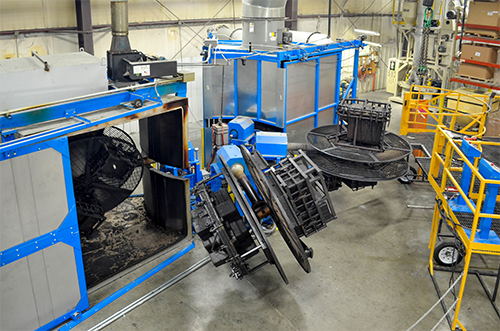From Vision to Form: The Journey of Creative Plastic Transformations
It’s no longer something new in the world we live in now; invention and imagination are abundant, and both of them are interwoven. When we look around us today, we are constantly seeing new inventions and ideas spring up. This isn’t any different when we come to the aspect of creative plastic transformation; the movement from concept to form in that aspect has caught the essence of human inventiveness.
Previously, it was general knowledge that plastic was just a simple material. However, in modern times, plastic has exceeded the limits of being just a simple material to become a canvas for artistic expression and a playing field for engineering wonders.
This article would go in-depth into the exciting process where ideas are transformed into physical plastic shapes, Along the way, we would also delve into studying the captivating process of imagination, engineering, and ultimately manufacturing that brings about the realisation of magnificent and useful plastic creations
Unleashing Imagination: the Beginning of vision
The first step in this journey of plastic transformation would be to have an idea of what you want to achieve; most times, that spark of inspiration is a picture or a notion. The beginning of a concept is the first step towards the creative changes you hope to achieve. This stage is often powered by the wide array of possibilities that are provided by Plastics Rotomolding, a substance that you can mould into any type of texture, shape, or colour, providing innovators with a diverse canvas on which their ideas can be brought to life.
Design as the Blueprint of Innovation
When it comes to Design, Designers are, no doubt, the most important role players in the conversion of abstract notions into tangible blueprints as the vision begins to find expression.
What a lot of people don’t realise is that design goes beyond just aesthetics; it is a deliberate combination of artistic expression and functional necessities. It is then necessary for us to discuss what creative plastic transformation involves.

It is a careful consideration of elements such as production procedures, material qualities, and end-user experiences. Designers shape their ideas with cutting-edge design software, which they use to bring about digital representations that close the gap between imagination and reality.
The Union of Design and Artistry
The Union of Science and Beauty is at the heart of the plastic transformation from vision to form. One of the critical factors to consider is the choice of material. This is so because it can affect not just the look but also the thermal, mechanical, and chemical properties of the final product. Engineers work together with material scientists to pick the best polymer for the design; this becomes necessary so that the desired look is effortlessly merged with the product’s practical requirements.
Engineering: from Blueprint to actual Reality
As we transition from vision to form, a very important aspect that helps to act as a connection that transforms blueprints into tangible plastic creations is engineering. The role that engineers play cannot be overemphasised. They first carefully make a proper design analysis, taking into consideration factors such as manufacturability, feasibility, and structural integrity. This particular stage involves the creation of moulds and tools that are streamlined to the specific plastic transformation process. From the texture of the surface, down to the thickness of the walls, every single detail is of utmost importance, as the engineers make efforts to ensure that there is a balance between artistic expression and functional performance.
The Role of Manufacturing Techniques
In this section, we would discuss the role of Manufacturing Techniques. This is important because it is a critical aspect of creative plastic changes. Among these techniques, the one that stands out is rotational moulding. It is a versatile and interesting process that allows for the creation of complicated shapes. A hollow mould is heated while being rotated along two perpendicular axes in this technique. The plastic soon begins to melt and then covers the interior of the mould, it fuses to form smooth, detailed shapes that match the original design. Because rotational moulding results in the production of huge, hollow things with constant wall thickness, it is an excellent choice for sculptures, industrial components and outdoor furniture.
Crafting Realism, Bringing Vision to Life
In rotational moulding, the plastic material begins to take the form of the designer’s vision as the mould rotates. The molten plastic is hardened or solidified, and the fine features are secured in the cooling phase. When the mould is opened, what you get is the masterpiece- a plastic that is a result of the fusion of artistry, engineering and craftsmanship. The masterpiece at the end of the day is a joy to behold both to the producers and onlookers.
Beyond Beauty: Functionality and Innovation
The process from vision to form isn’t just about Beauty, it encompasses functionality and Innovation. Plastic transformations that are creative and gotten as a result of rotational moulding are not just confirmed to sculptures and decorative objects, they find applications in diverse ways. Plastic innovation demonstrates the Union of inventiveness and engineering know-how, from functional car components that enhance performance to medical devices that save lives. Not just that, as sustainable practices begin to gain popularity, there would be an incorporation of eco-friendly materials and procedures, ultimately leading to a greener future ahead.
The voyage of creative plastic transformations from vision to form is a monument to human inventiveness and mechanical expertise. It’s a journey where ideas take flight, concepts become blueprints, and engineering weaves artistry into reality. The journey from vision to form highlights the essence of what humans can do when they combine their creative energies with the precision of mechanical mastery, whether it’s a vivid sculpture gracing a public space or a cutting-edge device revolutionising an industry.